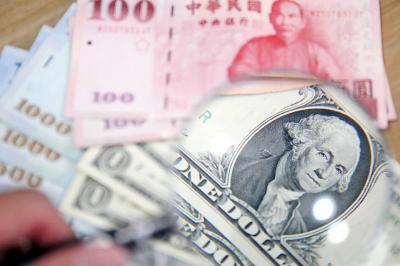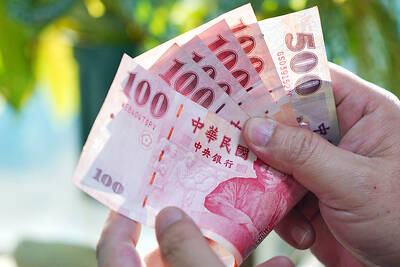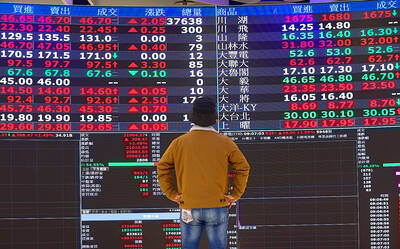Generic drug developer Syngen Biotech Co (生展生技) said yesterday that it aims to increase its market share of antibiotic mupirocin from 10 percent to between 20 percent and 30 percent in the near future.
The global market for mupirocin is worth about US$228 million a year, the firm said.
“We purchased the technology and patents of mupirocin, and our manufacturing process has evolved significantly after making the drug for four to five years,” Syngen Biotech chairman Chen Wei-jen (陳威仁) said.
There are three companies making the drug around the world, while other firms are reluctant to enter the market because of its high entry barrier, Chen said.
Sales of mupirocin accounted for 13 percent of Syngen Biotech’s revenue of NT$387 million (US$12.6 billion) from January through September, the firm said, adding the drug has the highest gross margin of all its products.
The company is also developing mupirocin calcium, a similar antibiotic used in the nasal cavity and set to enter the market in 2016, Chen said.
Meanwhile, by cooperating with Sichuan Cangbao Cordyceps Sinesis Biotechnology (四川藏寶蟲草生技), the company successfully raised caterpillar fungus this year, Chen said, adding that the fungus is sold for 6,000 yuan (US$960) per 22.4g.
The company, set to start trading its shares on the Emerging Stock Market today, has capital of NT$171 million and it reported earnings per share of NT$1.22 in the first nine months of the year.
Last year, the company reported revenue of NT$275 million, earnings per share of NT$0.85.

The US dollar was trading at NT$29.7 at 10am today on the Taipei Foreign Exchange, as the New Taiwan dollar gained NT$1.364 from the previous close last week. The NT dollar continued to rise today, after surging 3.07 percent on Friday. After opening at NT$30.91, the NT dollar gained more than NT$1 in just 15 minutes, briefly passing the NT$30 mark. Before the US Department of the Treasury's semi-annual currency report came out, expectations that the NT dollar would keep rising were already building. The NT dollar on Friday closed at NT$31.064, up by NT$0.953 — a 3.07 percent single-day gain. Today,

‘SHORT TERM’: The local currency would likely remain strong in the near term, driven by anticipated US trade pressure, capital inflows and expectations of a US Fed rate cut The US dollar is expected to fall below NT$30 in the near term, as traders anticipate increased pressure from Washington for Taiwan to allow the New Taiwan dollar to appreciate, Cathay United Bank (國泰世華銀行) chief economist Lin Chi-chao (林啟超) said. Following a sharp drop in the greenback against the NT dollar on Friday, Lin told the Central News Agency that the local currency is likely to remain strong in the short term, driven in part by market psychology surrounding anticipated US policy pressure. On Friday, the US dollar fell NT$0.953, or 3.07 percent, closing at NT$31.064 — its lowest level since Jan.

The New Taiwan dollar and Taiwanese stocks surged on signs that trade tensions between the world’s top two economies might start easing and as US tech earnings boosted the outlook of the nation’s semiconductor exports. The NT dollar strengthened as much as 3.8 percent versus the US dollar to 30.815, the biggest intraday gain since January 2011, closing at NT$31.064. The benchmark TAIEX jumped 2.73 percent to outperform the region’s equity gauges. Outlook for global trade improved after China said it is assessing possible trade talks with the US, providing a boost for the nation’s currency and shares. As the NT dollar

The Financial Supervisory Commission (FSC) yesterday met with some of the nation’s largest insurance companies as a skyrocketing New Taiwan dollar piles pressure on their hundreds of billions of dollars in US bond investments. The commission has asked some life insurance firms, among the biggest Asian holders of US debt, to discuss how the rapidly strengthening NT dollar has impacted their operations, people familiar with the matter said. The meeting took place as the NT dollar jumped as much as 5 percent yesterday, its biggest intraday gain in more than three decades. The local currency surged as exporters rushed to